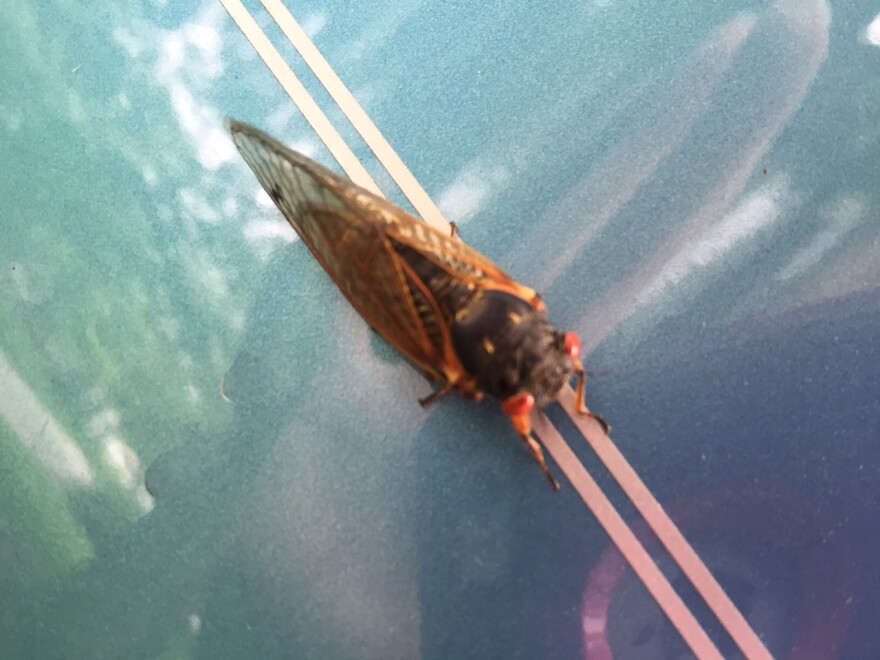Abby Cornelius, a homeowner in Martin City, Missouri, sees them everywhere.
They're in the grass, crouching on leaves, swimming in the dog bowl, and hanging out on the grill — dead or alive.
Last Sunday, she noticed her newly cleaned gutters were suspiciously clogged.
“I crawled out the window to take a look and had to scoop dead cicadas out of them,” she said in an email. “The shells will probably have to be power washed off the house."
The cicadas that have invaded Cornelius’ yard are periodical cicadas. They live just a few feet underground for the majority of their lives and emerge in great numbers every 17 years to reproduce.
Last seen in 1998, the 17-year Brood IV, or Kansan Brood, broke ground this summer in the Kansas City area, reportedly hugging trees and covering tires in some neighborhoods.
“When they come out of the ground, they have to go somewhere and they are going to go to a vertical object that they can crawl on,” said John Cooley, a researcher at the University of Connecticut.
Cooley has studied cicadas, “longer than their generation time."
Some areas of the metro are seeing more cicadas than others. For instance, not many periodical cicadas show up in Cooley’s boyhood home of Prairie Village, which he says is likely due to the area’s habitat.
“What periodical cicadas need is dense, relatively intact hardwood forests, and so if you carve a suburb out of a place like that it’s probably got a greater chance of having periodical cicadas,” he explained.
Cooley runs magicicada.org, a project that logs cicada sightings across the country and encourages people to submit their own. Zoom into the Kansas City area and you can see cicadas are surrounding the city, but there aren't any reported sightings of Brood IV in the more densely populated areas of the city, including downtown, Midtown, Waldo and Brookside.
Above ground, the cicadas spend a week maturing before they begin their adult phase. In adulthood, the males sing until they die.
Northwest of the city in Parkville, Missouri, Laura Gilchrist was surprised by their loudness – she measured it at 90 decibels.
Cooley says all three species of the 17-year cicadas can be heard in the area: Magicicada septendecim, Magicicada cassini and Magicicada septendecula. The Magicicada septendecim can be heard in the morning and the Magicicada cassini call in the afternoon and evening.
Weather is a big factor in their survival above ground, “If heavy thunderstorms roll through, they can damage the cicadas — knock ‘em down, beat them up,” Cooley said.
Gilchrist said she’s noticed a slight drop in volume since they showed up the first week of June, signaling Brood IVs are on their way out.
But the singing won’t stop anytime soon. During a periodical year, the life cycle of the periodical cicadas overlaps with the summer cicadas, Cooley said. As the periodical cicadas reach their dying phase in areas surrounding the city, Tibicen pruinosa, Kansas City’s most common summer cicada species, will soon take over singing in the evenings all over the Kansas City metro.
A sound, Cooley said, you can’t avoid during a Midwestern summer.
Listen to Cooley demonstrate the call of a summer cicada:
Eds note: An earlier version of this story incorrectly identified Martin City as being in Kansas.



